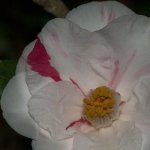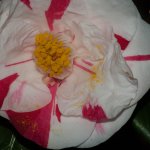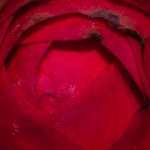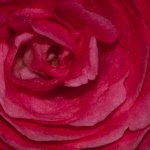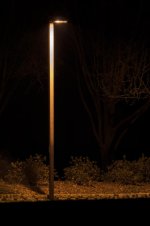You are using an out of date browser. It may not display this or other websites correctly.
You should upgrade or use an alternative browser.
You should upgrade or use an alternative browser.
Whiskeyman's Shot-A-Day 2014
- Thread starter Whiskeyman
- Start date
Whiskeyman
Senior Member
March 1, 2014, Day 60, Shot 60
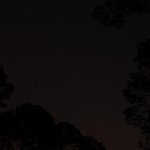
The Big Dipper, from behind the house.
And the same shot with the contrast turned up to +49, the highlights increased to 93 and the shadows reduced to -100.
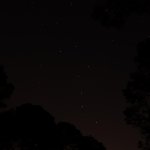
A bit soft, taken with the D90 kit zoom at 18mm. I'm going to research manual focus wides for this application.
WM

The Big Dipper, from behind the house.
And the same shot with the contrast turned up to +49, the highlights increased to 93 and the shadows reduced to -100.

A bit soft, taken with the D90 kit zoom at 18mm. I'm going to research manual focus wides for this application.
WM
Last edited:
BackdoorArts
Senior Member
March 1, 2014, Day 60, Shot 60
View attachment 75279
The Big Dipper, from behind the house.
And the same shot with the contrast turned up to +49, the highlights increased to 93 and the shadows reduced to -100.
View attachment 75280
A bit soft, taken with the D90 kit zoom at 18mm. I'm going to research manual focus wides for this application.
WM
I actually prefer the first - stars are supposed to be seen but remain subtle, at least in my thinking. What ISO and aperture were you shooting at? I know the kit lens isn't going to let a lot of light in even at minimum aperture, so it helps to bump the ISO up a bit and then look to reduce noise in post. Whatever lens you get, you want to be able to get the aperture down to f/2 or below if you can to allow as much light in as possible over the course of the exposure.
Whiskeyman
Senior Member
I actually prefer the first - stars are supposed to be seen but remain subtle, at least in my thinking. What ISO and aperture were you shooting at? I know the kit lens isn't going to let a lot of light in even at minimum aperture, so it helps to bump the ISO up a bit and then look to reduce noise in post. Whatever lens you get, you want to be able to get the aperture down to f/2 or below if you can to allow as much light in as possible over the course of the exposure.
It is a 30-second exposure at 18mm, f5.6, 30 sec, ISO 320 with no PP other than what I indicated in the initial post.
I am looking for a lens that's focal length is 20mm or less. Do you recommend a specific Nikkor lens for this type of shooting? I have read in several places that the Nikkor 20mm f3.5 is an exceptional lens, as far as sharpness goes, so I was thinking of buying one in good shape.
Thank you for you input.
WM
Whiskeyman
Senior Member
Still looks pretty darn good.
Thank you, weebee.
BackdoorArts
Senior Member
It is a 30-second exposure at 18mm, f5.6, 30 sec, ISO 320 with no PP other than what I indicated in the initial post.
I am looking for a lens that's focal length is 20mm or less. Do you recommend a specific Nikkor lens for this type of shooting? I have read in several places that the Nikkor 20mm f3.5 is an exceptional lens, as far as sharpness goes, so I was thinking of buying one in good shape.
Thank you for you input.
WM
I recommend shooting to allow as much light in as possible. More times than not this means wide open and higher ISO. For me depending on how much sky I want it means one of my f/1.8 primes - 28, 50 or 85mm. More times than not my sky photos will be the 28mm shot wide open. I like to keep the shutter speed at the max I can go without star movement (longer the lens, the shorter the time - there are charts out there that list the max shutter speed by focal length). I tend to set ISO around 1000-1600, fire off a shot or two and then adjust. You can definitely get away with f/2.8 but I wouldn't go smaller than that if you really want to capture stars.
Whiskeyman
Senior Member
Thank you, Moab Man!
WM
WM
Whiskeyman
Senior Member
Whiskeyman
Senior Member
I hear you both, but increasing the ISO just seemed to brighten the skies.
WM
WM
If that is what's happening then it sounds to me like you're just dealing with too much light pollution. I would probably reduce shutter time to minimize star trails and then bump the ISO to compensate for the shorter shutter.
I get frustrated with our light pollution and it is very little where I shoot at.
I get frustrated with our light pollution and it is very little where I shoot at.
BackdoorArts
Senior Member
Light pollution in most of the US is an awful mess for photographers. I'm in a rather remote section of NJ and still deal with it rather regularly. I may have overstated my advice to you above - what you're doing to bring out the light you've captured is correct, albeit perhaps just a little over-applied. But what I expect you'd find with higher ISO is more of the smaller, subtle stars appear. It's always a balance, but I find it works to my benefit to start with the ISO high and adjust the shutter speed down if there's too much light.
Whiskeyman
Senior Member
Thank you both for replying. Add the fact that increasing particulate air pollution exacerbates the light pollution further, and it just keeps getting more difficult to successfully skywatch.
I will attempt to implement your suggestions later. Like when we aren't completely covered with clouds, as I found this evening when I went out to again photograph the stars and the moon.
WM
I will attempt to implement your suggestions later. Like when we aren't completely covered with clouds, as I found this evening when I went out to again photograph the stars and the moon.
WM
Whiskeyman
Senior Member
March 3, 2014, Day 62, Shot 62
Lousy day.
Lousy night.
Lousy weather.
Lousy attitude.
Lousy shot.
View attachment 75631
Then you deserve a like for effort
Whiskeyman
Senior Member
Then you deserve a like for effort
Gotta keep the 365 going!
BackdoorArts
Senior Member
Gotta keep the 365 going!
Amen to that.

